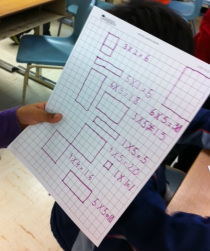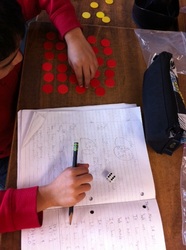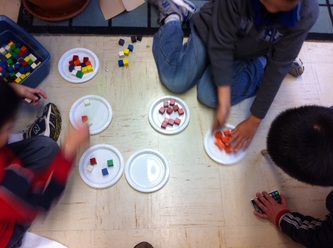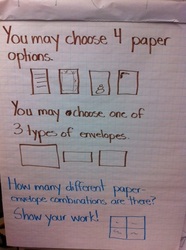
First, we examined the area model, by making rectangles of various shapes and sizes, and calculating the total area.
Next, we made arrays out of two sided counters, rolling the dice to determine number of rows and columns, then building the array to match. After that it was time to examine the effect of "0" on a number. We did this by looking a plates of "cookies" (coloured cubes), and noticing that if we had 0 cookies, it wouldn't matter how many plates we had, we'd still have 0 cookies! The set model was the perfect way to demonstrate this concept. (That being said, I'm not sure I'd wait so long to introduce the set model next time, as I think it is an easier to access model of thinking about multiplication than the area model, for Grade 3s.)
I also told them that if they wanted to give their copied poem to someone, they could choose one of THREE different kinds of envelopes I had brought for them: full page, business or a smaller size envelope.
The students were very excited, and eager to begin.
BUT... I told them they could only get started on this project after they showed me how many different possible paper-envelope combinations they could come up with.
In the end, even the one group who thought the answer was 7 (3 PLUS 4!!!) developed and shared at least two plausible solutions.
The preparation for this math unit was considerably more involved than the typical textbook-linked jot notes in my dayplan, but it was well worth it to see the light bulbs go on for so many students.








 RSS Feed
RSS Feed